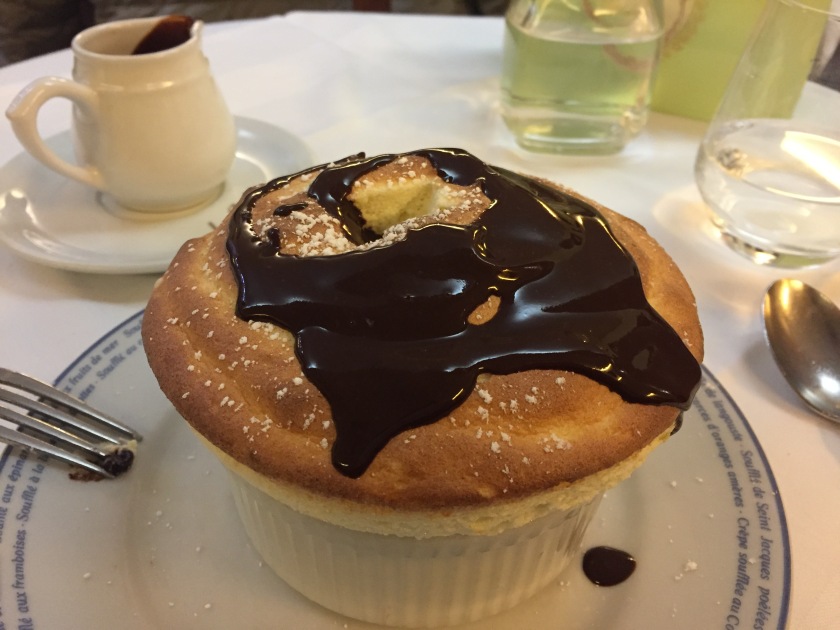From PhD Thesis “Food and Cheer and Prose: The Gastronomy of Fantastic Literature”
Introduction: The Menu is Not the Meal
“What do you want for dinner?” and “What book should I read next?” are not as disparate questions one might assume straightaway. What is for dinner is just what is for dinner, for most people. However, both queries can encompass immense variations of the human experience, if only one meal or one story at a time. For some, the question of dinnertime does not seem to carry the same magnitude of academic considerations as to what a particular work of literature has done in the building up of, or in the dismantling of, civilizations. Food as an integral part of literary theory and analysis is a growing niche, now recognized as deserving of its own scholarship. This thesis will seek to rectify and reconcile the bridges between the dinner table and the bookshelf.
Until recently, there was not a separate academic discipline to study food cultures and foodways. To study food at an academic level was mostly relegated to the scientific minded fields of nutrition and food ecology with some considerations in human anthropology such as in the works of Claude Levi-Strauss (The Raw and the Cooked) and in some of Margaret Mead’s observations (Food Habits Research: Problems of the 1960’s). In the new millennia, the growing field of food studies has emerged as “an academic discipline that studies the relationships between food and the human experience” (Zhen, 2019, p. 19). Incidentally, at the same time scholastic considerations of fantastic literature, and its place of deserving analysis in literary theory, has also increased. This thesis then sits at a nexus of human experience as it considers the “gastronomy of fantastic literature.” The word “gastronomy” has several considerations in that it has come to mean “the art of eating” in common discourse but it is also the concept that “a meal had links beyond the kitchen to the culture and landscape” (Davidson, 2014, “gastronomy”). The “fantastic” draws from Dr. Erik S. Rabkin’s Fantastic Worlds: Myths, Tales, and Stories that: “Such worlds are not merely different from our own, but alternative to our own. Fantastic worlds— perhaps paradoxically— are defined for us and are of interest to us by virtue of their relationship to the real world we imagine to have been thought normal when the story was composed” (1979, p. 4, italics in original). Under the umbrella of “fantastic,” I have drawn from traditional fantasy sources such as J.R.R. Tolkien’s The Lord of the Rings, but also from other subgenres such as horror, science fiction, and magical realism that have both influenced me as a writer and as an academic, as well as examples that will provide clarity and context in the understanding of the theories I have presented in defining the “gastronomy of fantastic literature.”
Because food studies is a new academic field, even more so when considering the gastronomy of fantastic literature, questions about the nature of food in literature can cast a wide berth. As such those that arose early in my research included: “why is food imagery important to works of SFF?,” “how can it be identified and classified and how has it changed throughout the years?,” “how is it different in SFF versus other fiction genres?,” and “does food imagery change between SFF subgenres?” These are hypotheses of which I have elaborated on in chapters two and four. Much of chapter three formed around the queries “how does food imagery play into world building and setting?” and “how does food define characters in their response to the meals they eat or food they encounter?” A final research postulation that formed during my research proposal was the consideration of the both the writer’s and the reader’s reactions in regards to personal dietary preferences and primal or cultural aversions to the consumption of taboo food. These are answered throughout this thesis as one considers the nature of such notions as desire, disgust, and vicarious enchantment of fantastic food.
My novel How to Cook a Dragon (HtCaD) was not what I initially proposed as the creative component for this PhD. Originally, I had envisioned a collection of short stories with accompanying recipes to explore how food imagery is used in the different subgenres and tropes of the fantastic, with HtCaD as the central piece of the collection. It grew too big for a short story, but in the longer narrative I was still able to explore and still cook up a menu of the various uses and applications of food imagery within a novel. Philosopher and Zen devotee, Alan Watts was known to often suggest that “the menu is not the meal” (1957, p. 13) and in building on that musing, there are many courses to consider in my novel and its accompanying critical commentary.
Throughout my thesis I use a handful of terms. Some concern more recent theories in academia, while others have had new life breathed into them by these theories. Concerning “world-building,” I have used Mark J.P. Wolf’s preference for a hyphen instead of using world-building as one word or as two separate words. World-building is both the act of, and the result of, creating fictional worlds. “Every setting of every piece of fiction ever written is by definition a product of someone else’s imagination,” asserts author Jeff VanderMeer, and to what depths world-building occurs is an indeterminable gradient, varying from one fictional world to the next, between the “Primary World” and the “Secondary World.” The Primary World is our own reality, whereas a Secondary World is the slice of alternate reality or a whole separate universe in a work of fiction. Examples of Secondary Worlds can be both the fictional French village of Lansquenet-sous-Tannes, which is on the same map of France as Paris and Marseilles in Joanne Harris’s Chocolat novels, or an entire invented universe riding on four elephants on top of a cosmic turtle in Terry Pratchett’s Discworld series. Finally, there is “subcreation”, which originated in J.R.R. Tolkien’s lecture “On Fairy Stories” and was subsequently borrowed by Mark J.P. Wolf for use in Building Imaginary Worlds: The Theory and History of Subcreation:“Tolkien termed the making of a secondary world ‘subcreation’, meaning ‘creating under’, since human beings are limited to using the pre-existing concepts found in God’s creation, finding new combinations of them that explore the realm of possibilities” (2013, p. 23). These terms became the foundation for exploring how food imagery influences and is influenced by world-building and the consequent considerations of our Primary World versus Secondary Worlds and the subcreation that is unfolded usually via the narrative of a story.
For Chapter One, “Terroir: Oh, the Places You Can Taste,” I propose a theory that fantastic literature itself has its own “terroir,” taken from the French term “goût du terroir” meaning “taste of place.” Terroir supposes that the flavors of food in our Primary World are affected by the soils, geography, and microclimate of agricultural areas. Historically, the term was merely applied to traditional French foodstuffs such as cheese and wine but has since grown both poetically and scientifically to encompass the “taste of place” in other items such as chocolate and coffee in our world and now via the food imagery in the Secondary Worlds of fantastic literature.
With Chapter Two, “‘Objects of Alimentation’: A Taxonomy of Fantastic Food Imagery,” I consider what qualifies as food imagery in fantastic literature and how readers can use this new taxonomy to explore the relationships between food and fantastic literature. This taxonomy also contemplates how food as philosophical objects are perceived through the experiences of characters and vicariously in readers.
Moving on to Chapter Three, “Mise en Place: The Infrastructures of Fantasy Subcreation,” I examine theories of how food imagery and foodways are integrated into world-building through Mark J.P. Wolf’s theories of subcreation and its infrastructures of nature, culture, language, and mythology and philosophy. There is also an analysis of particular food subcultures, which are often explored via the narrative of fantastic works.
Finally, Chapter Four “Mastering the Art of Fantastic Food: The Context and Creative Practice of How to Cook a Dragon,” explores the pantry of ingredients that went into the creative practice of my novel and how fantastic subgenres such as high fantasy, low fantasy, and urban fantasy, and the tropes inherent in their traditions, shaped my novel and PhD.
Before continuing on to the rest of this thesis, I would like to call upon an assertion of literary theorist Rosemary Jackson, who wrote that fantasy is a “literature of desire” (1988, pp. 3-4). One of the greatest of human desires, both of survival and of pleasure, is that of food. A meal can make or break a day for any real or fictional person; it can soothe, provide comfort, and even ignite the human desires to avoid the negative, mainly those of disgust and illness in regards to rotten or taboo food. Both sides of desire will be explored in the preceding chapters, explaining some of the context of the desires in the characters of How to Cook a Dragon and in the desires emanating from my research.






